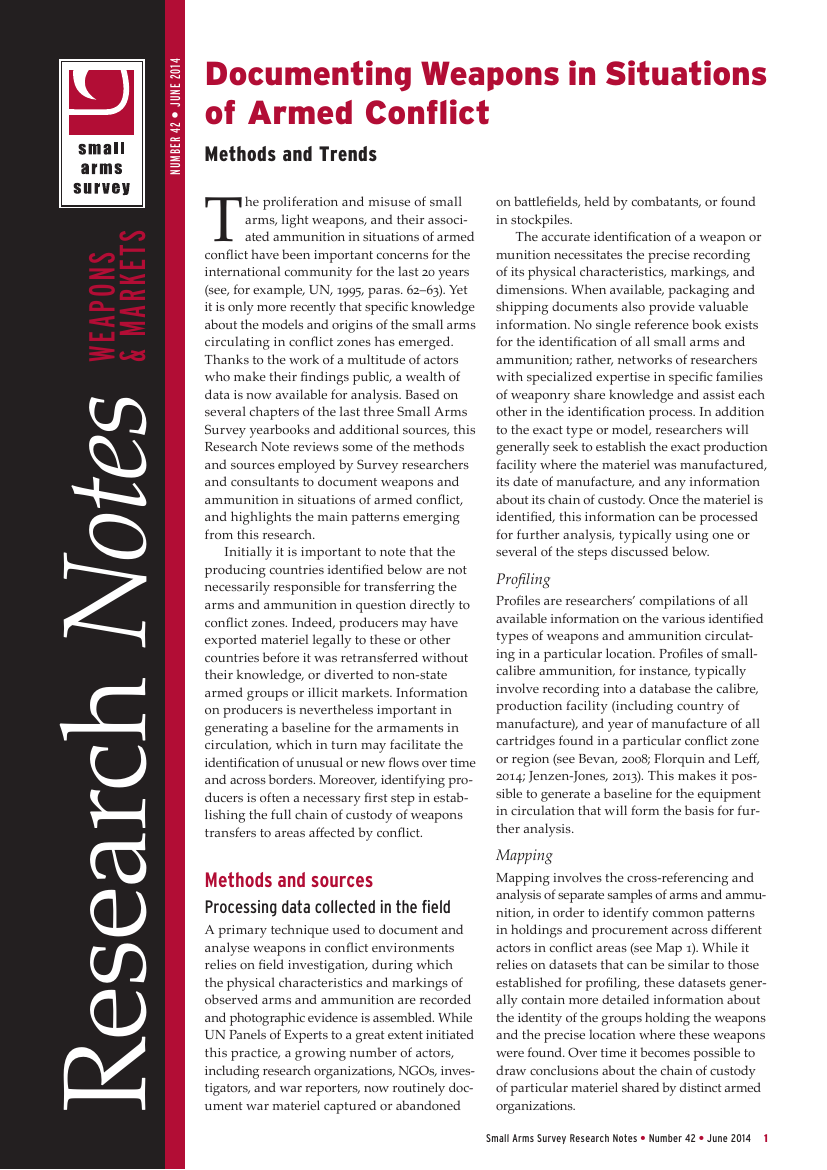
Documenting Weapons in Situations of Armed Conflict: Methods and Trends (Research Note 42)
The proliferation and misuse of small arms, light weapons, and their associated ammunition in situations of armed conflict have been important concerns for the international community for the last 20 years. Yet it is only more recently that specific knowledge about the models and origins of the small arms circulating in conflict zones has emerged.
Thanks to the work of a multitude of actors who make their findings public, a wealth of data is available for analysis. Based on several chapters of the last three Small Arms Survey yearbooks and additional sources, this Research Note reviews some of the methods and sources employed by Survey researchers and consultants to document weapons and ammunition in situations of armed conflict, and highlights the main patterns emerging from this research (2014).
Initially it is important to note that the producing countries identified are not necessarily responsible for transferring the arms and ammunition in question directly to conflict zones. Indeed, producers may have exported materiel legally to these or other countries before it was retransferred without their knowledge, or diverted to non-state armed groups or illicit markets. Information on producers is nevertheless important in generating a baseline for the armaments in circulation, which in turn may facilitate the identification of unusual or new flows over time and across borders. Moreover, identifying producers is often a necessary first step in establishing the full chain of custody of weapons transfers to areas affected by conflict.
Have your say about Small Arms Survey publications and products: take 5 minutes to fill out our questionnaire.